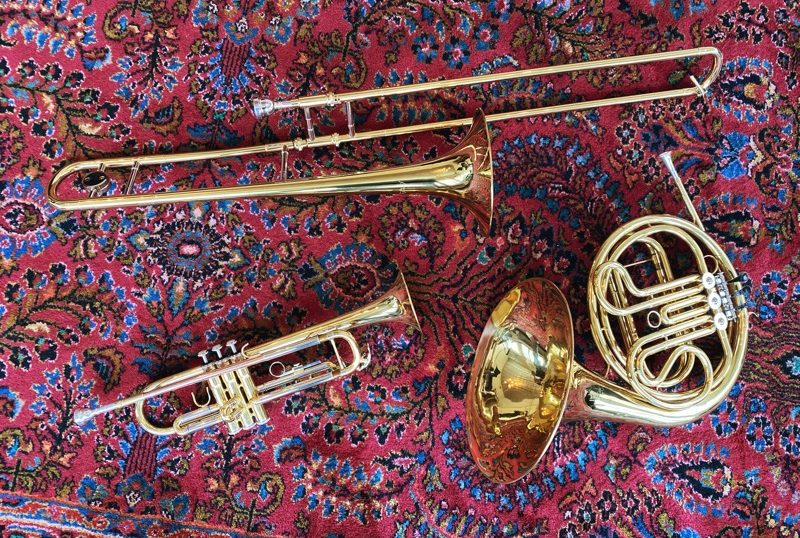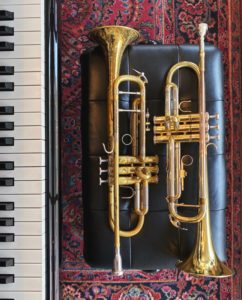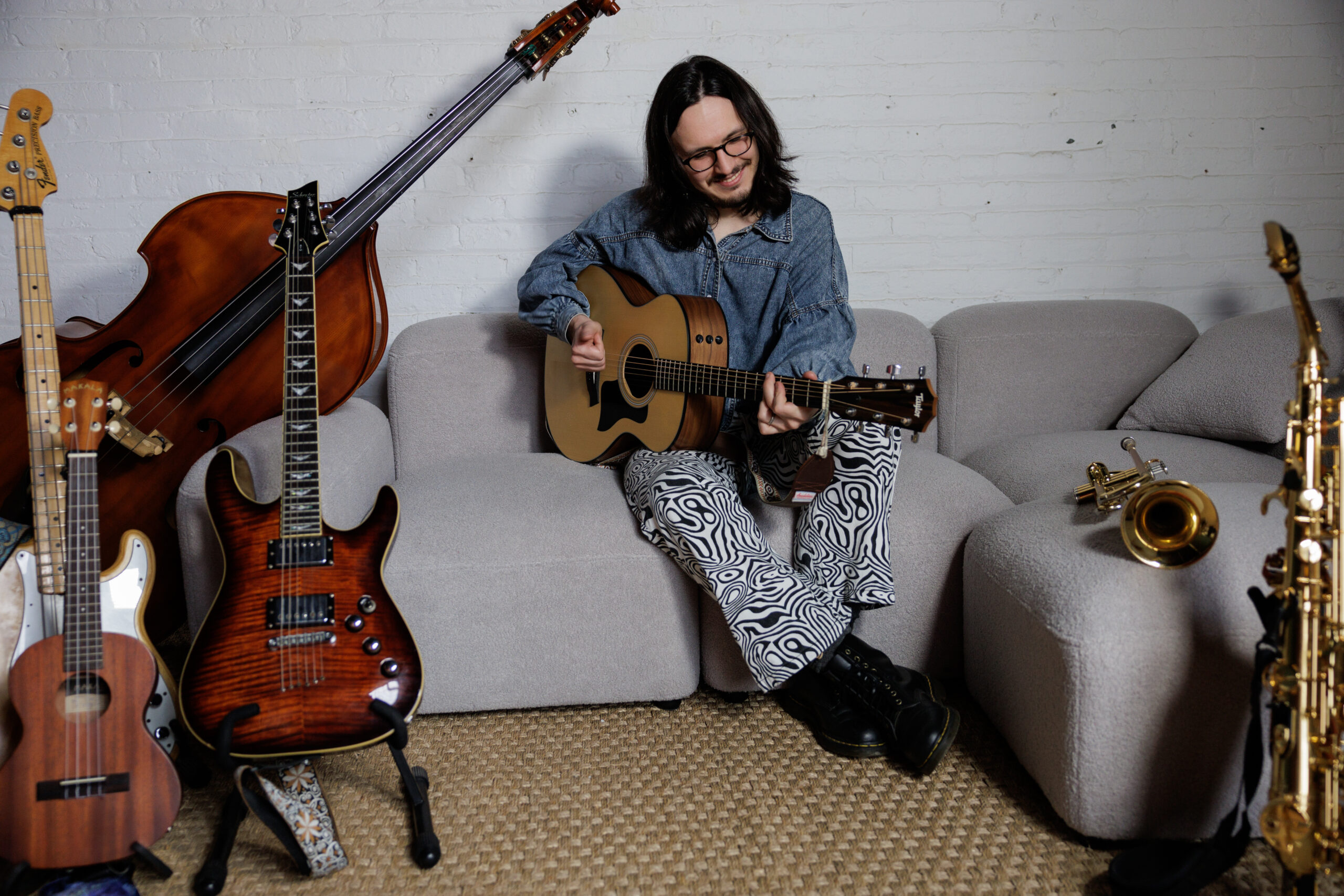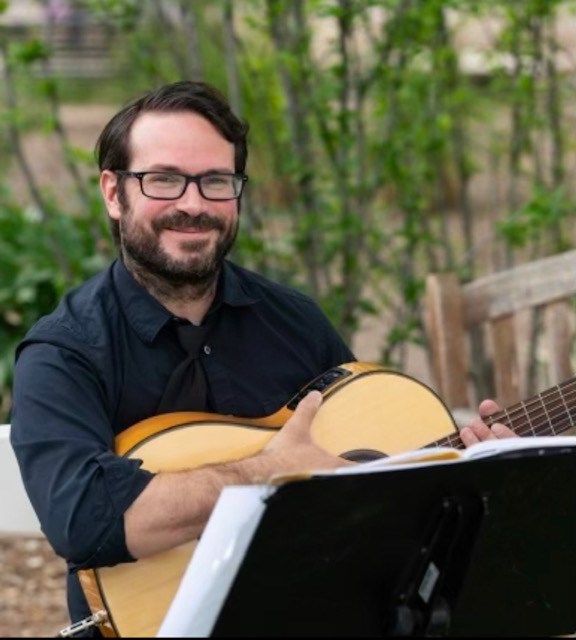
1/2 hr, 45 min, 1 hr Lessons
IN HOME, STUDIO AND ONLINE LESSONS
Studio Lessons in Fishtown and South Philly
In Home Lessons in Philadelphia, Lower Merion, Main-Line
Looking for trumpet or trombone lessons? Learn how to read music, proper embouchure, breathing techniques, and all the necessary skills to perform in a band, orchestra, or other ensemble.
Trumpet
Trombone
French Horn
Tuba
Euphonium
Technique
Theory
All Ages & Skill Levels
Brass Studio
The mission of our brass studio is to instruct trumpet, trombone, tuba, euphonium, and french horn students of any age and ability level to practice core fundamentals in order to perform with comfort and flexibility. We teach important techniques that serve as a foundation for music-making, such as breath control, tone, music notation comprehension, and melodic fluency; along with a solid theoretical understanding, these skills are necessary for our students to create expressive and meaningful performances.
Brass instruments can serve a multitude of functions in all types of orchestras, bands, and ensembles. Although found most often in classical and jazz, brass musicians like our instructors are also frequently featured in pop, funk, folk, rock, dance music, and many other progressive contemporary styles. Our instructors aim to prepare students to perform in any genre as a melodic solo instrument, as accompaniment, and as an ensemble player. Improvisation is typically found in jazz and other groove-based music, but it is also an important topic for our studio, regardless of the student’s genre preferences, because the act of creating new musical ideas helps to forge strong technical and creative skills.
Beginner Students
Students who are new to playing brass can expect to focus immediately on the technique necessary to produce clear and purposeful sounds from our instruments. Exploring the basics of brass playing, students will gain a working understanding of topics that include:
- Valve fingerings/slide position systems
- The overtone series
- Embouchure
- Articulation
- Sound production
- Sheet music reading
- Major and minor scales and arpeggios
By studying these concepts, students will learn how to accurately select notes, play rhythms, and make a beautiful sound. While we continue to hone in on the instrumental approach that makes musical performance possible, we also take care to help students hone their own musical senses at every level of experience. Playing songs, scales, and patterns provide a holistic understanding of the logic and possibilities of the instrument. Armed with that understanding, instructor and student will explore general music concepts like melody, harmony, rhythm, and style through instrumental experimentation in order to develop a deep connection and appreciation for music. Beginning students will also apply these newfound skills by writing original melodies, performing basic improvisations, and learning songs by ear.
Intermediate to advanced students
 Students who have already established basic brass technique will continue to expand their playing by consuming and dissecting more and more pieces of music from a variety of genres. Each new piece of repertoire is full of important teachings to impart, and we can use these new lessons to dive into the three-dimensional practice of music-making! Keeping in mind the student’s interests and preferences, instructors will search out a diverse range of classical solo literature, jazz tunes, pop melodies, and any other materials that may help expand the student’s musical vocabulary. Even though this process involves a large diversity of source materials, the instructor takes care to focus on a set of simple and effective goals such as the establishment of relaxed musical flow and instrumental fluency, which are both paramount in achieving a convincing performance.
Students who have already established basic brass technique will continue to expand their playing by consuming and dissecting more and more pieces of music from a variety of genres. Each new piece of repertoire is full of important teachings to impart, and we can use these new lessons to dive into the three-dimensional practice of music-making! Keeping in mind the student’s interests and preferences, instructors will search out a diverse range of classical solo literature, jazz tunes, pop melodies, and any other materials that may help expand the student’s musical vocabulary. Even though this process involves a large diversity of source materials, the instructor takes care to focus on a set of simple and effective goals such as the establishment of relaxed musical flow and instrumental fluency, which are both paramount in achieving a convincing performance.For advanced students, our instructors serve as an experienced set of eyes and ears who can help optimize the student’s development as a musician; instructors will present and explain new concepts, pick new repertoire pieces that present interesting challenges, create special projects that expand musical understanding, and help troubleshoot the student’s practice technique. At this point, the instructor acts somewhat like a personal trainer by challenging the student to progress beyond their existing limitations while ensuring that they avoid excessive strain that could result in harm to their body and technique.




